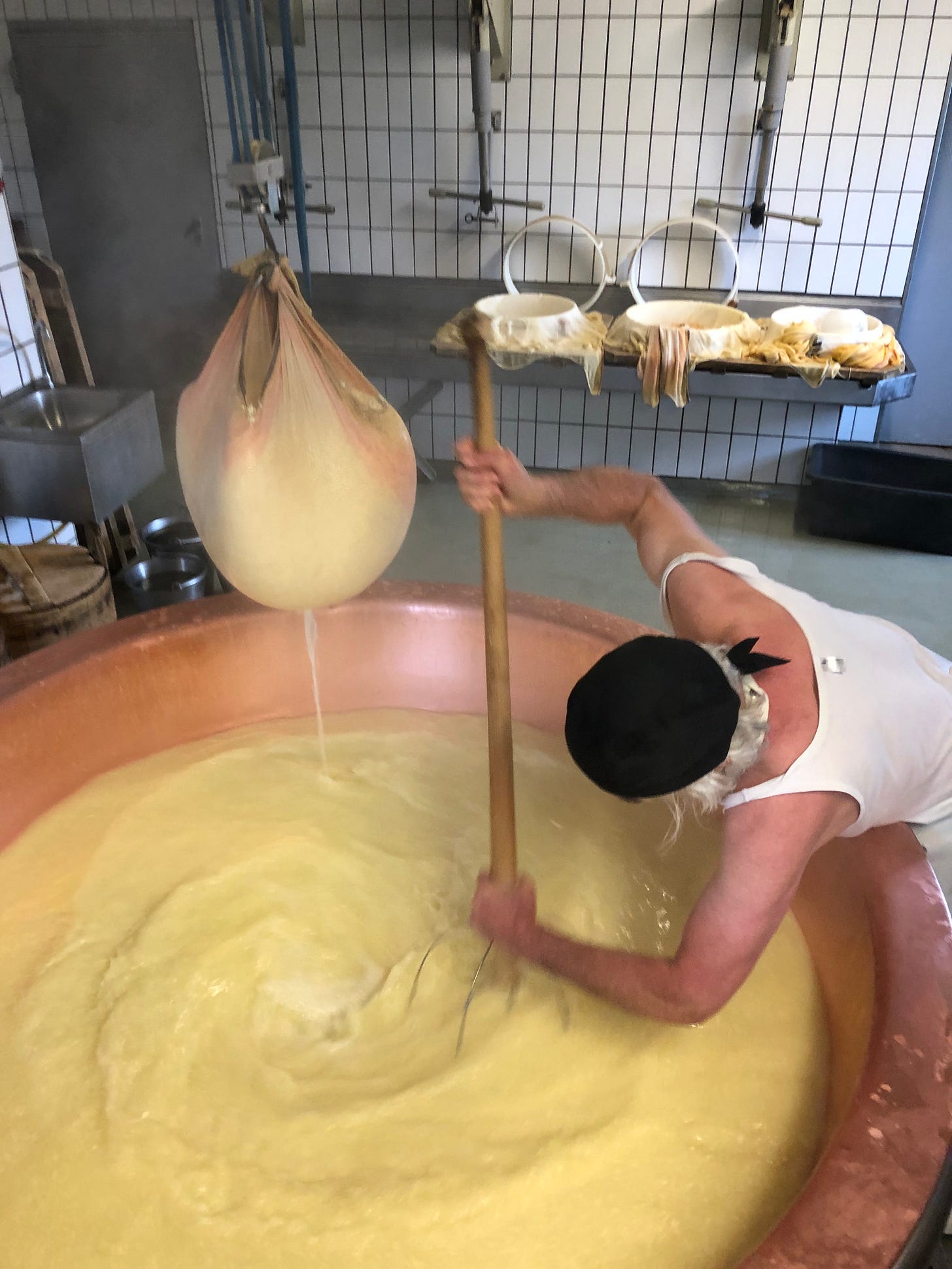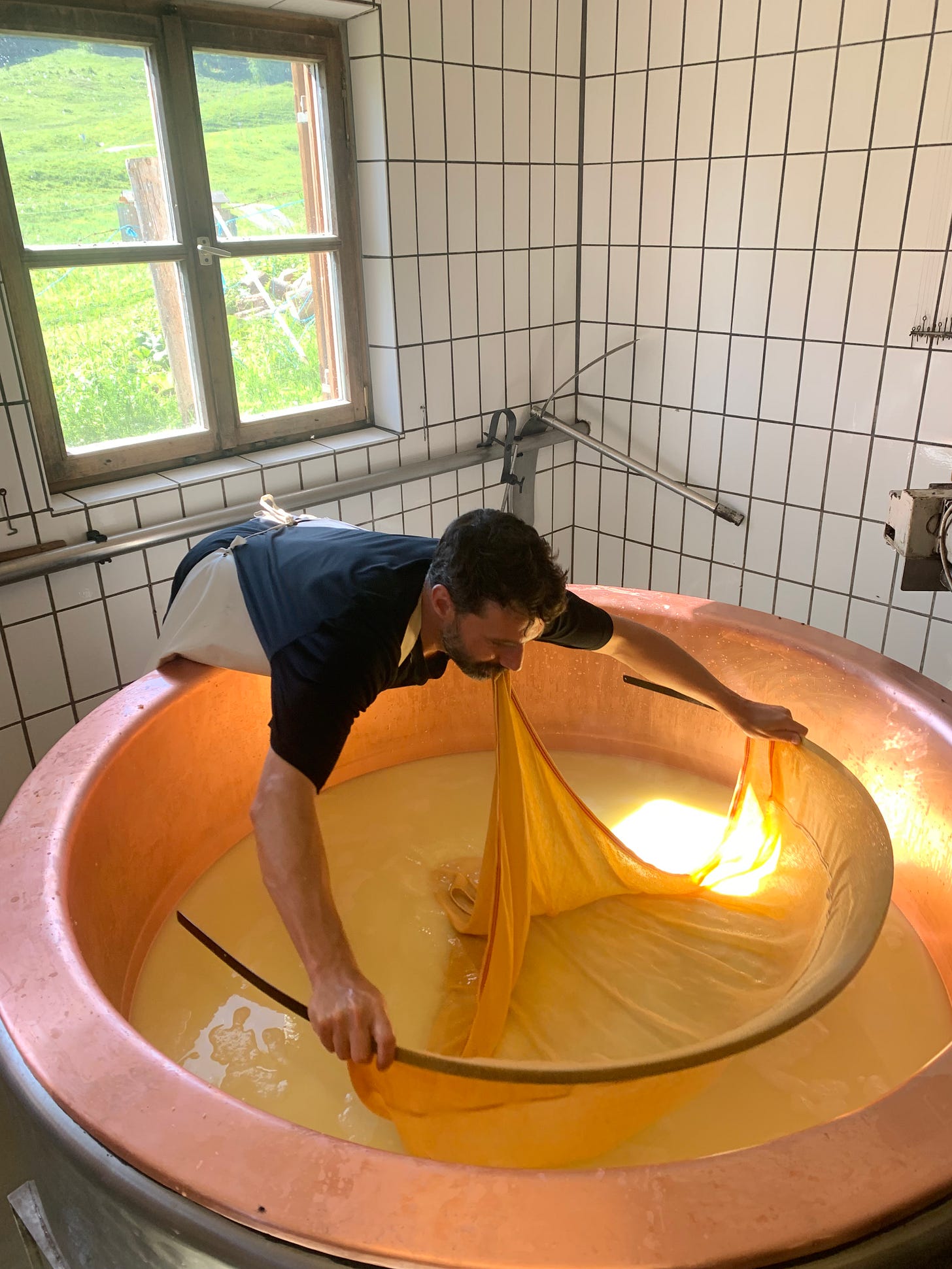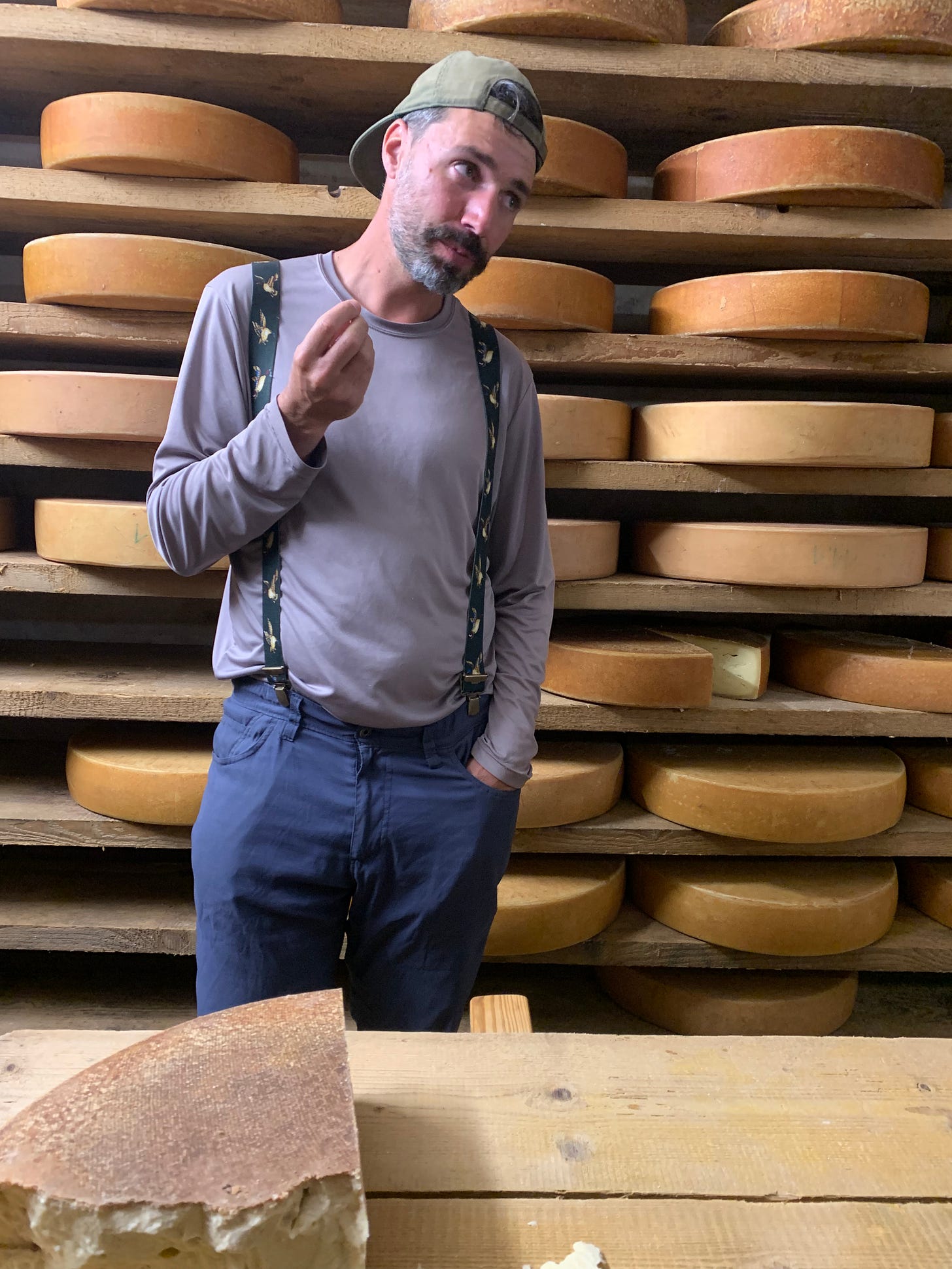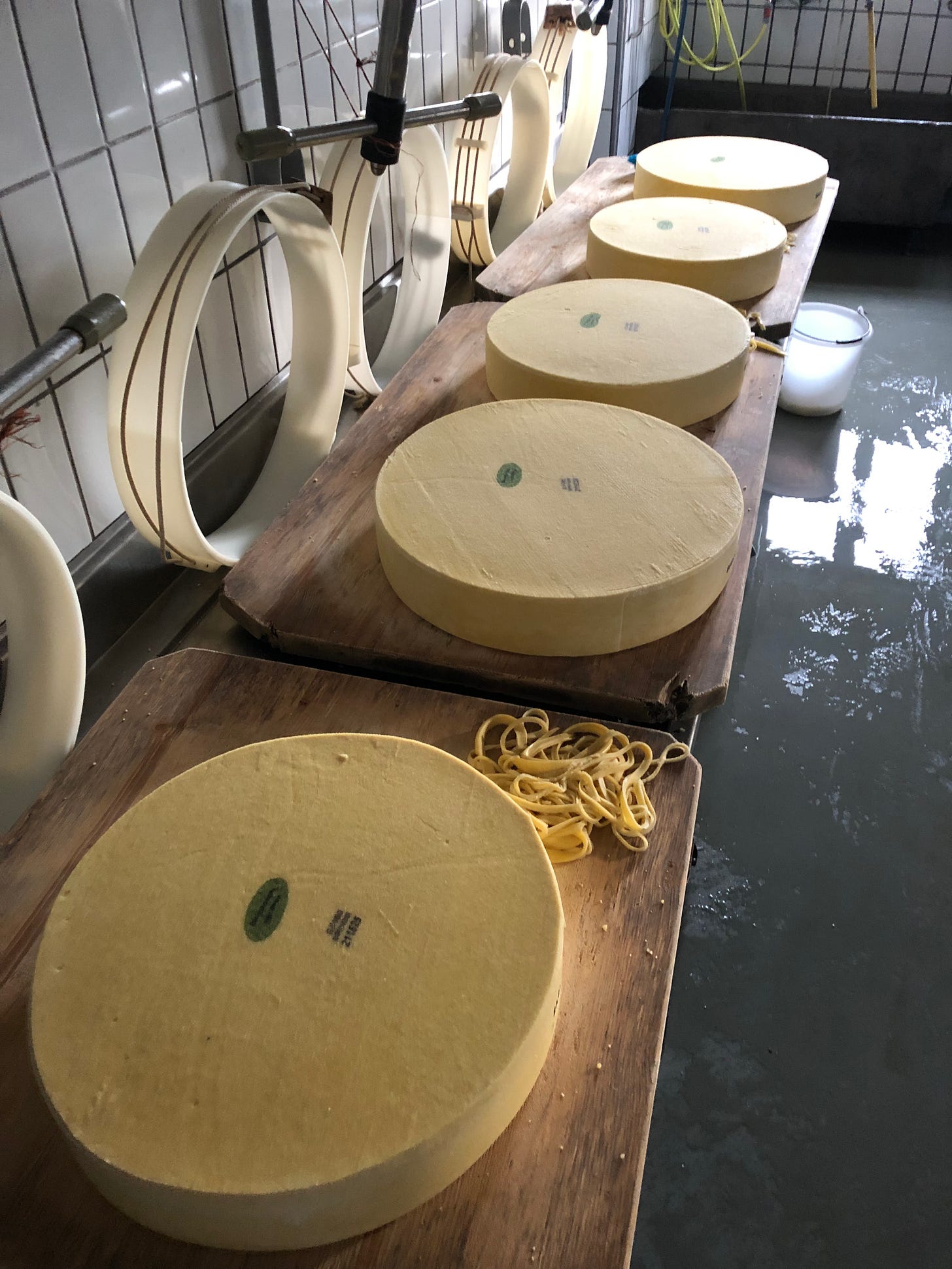Cheese Philosophy: Austrian Alps part 2
How a maker’s thoughts and motions transfer into their cheese.
I’ve met and worked alongside many cheesemakers. I enjoy watching people make cheese and perform seemingly mundane chores: pouring milk, stirring a vat, cutting the curd, flipping the wheels. The use of the body and senses to feel and make decisions on an intuition honed over years of daily repeated physical motions impresses me. Another side of cheesemaking is philosophical, and often the heart and mind of the maker are channeled through the body and manifest in the cheese. Cheeses can have personality, and their traits can resemble the people putting their energy into them. Working with Anton Sutterlüty, I found remarkable cheeses that embody an ethic and view towards life that resonates with me, and I would like to share my thoughts on this experience while they are fresh.
When I was an aspiring cheesemaker with only a few years experience, I realized there are a vast number of variables influencing the process. I felt that the more these could be measured and controlled, the better and more consistently one could make cheese. But now I feel that uniformity often equals mediocrity, that there will always be mystery involved, that we can never intellectually grasp all the factors that go into an amazing cheese.
Anton’s philosophy on life and temporality is deep, and affirmative. “Are you going to say yes, or no, to life?” “Every moment is unique, everything is constantly changing. Life is movement, let yourself move with it”. I watch him cut the curd with a graceful and fullly focused movement.
Cheese is unpredictable, and it’s hard to plan and force great cheese. “Sometimes the magic happens, sometimes it doesn’t.” You can try to command the process, remove the variables introduced by nature (weather, animal diet, seasonality), but the drive to consistency and homogeneity is a movement away from beauty, and nature. Anton’s process seems to actually increase the variables in the make, and encourage a wider range of biological influences. For instance, when I asked if he controls the temperature in his aging space he said “No, it’s good for the space to get a bit warmer In summer and colder in winter.” This encourages different enzymatic processes in a ripening cheese. These cheeses didn’t evolve in climate controlled spaces.
By moving in the opposite direction of the drive towards homogeneity, we learn to use our sense and pay attention to what’s going on outside the make room, as well as in the vat. The milk shifts seasonally, with the weather, humidity, and air pressure. With who is milking, where the animals are, what they are eating and drinking. A cheesemaker can build an intuition by sharpening their senses, seeing how the milk and curd act differently and relate this to outside conditions. Through making a cheese year after year, talking with the farmers daily, pattens can be discerned. Then you can aim for an equilibrium, make adjustments while allowing this variety in, letting things fluctuate. One can embrace the cycles, shift with changing conditions, and allow the milk to sing, rather than muting its shifting voices and cadence.
Rather than measuring acid development with a ph meter or using a moisture meter, Anton pays attention to slight tactile, visual, and olfactory changes during and after the make. Alpine cheeses don’t generate much acid during the make, but if things are developing too quickly he can tell, and make interventions accordingly, also predicting the next days cheese and acting preemptively. Deciding when to cut, the rate of cooking, time spent stirring at the final temp (52c), and the degree of firmness when removing the curd are vitally important variables. I had never worked with someone making these calls by feel in such a nuanced, observant way. I now believe this can be highly effective, to a degree that cannot be achieved using solely objective measurements. There is a synthesis that happens, combining multiple variables and judging the empirical data intuitively. Measuring tools can be used to train our senses, but we can also rely on them too much, and forget how sharp our senses can be.
I got in the habit of tasting every stage of the cheese to a level I hadn’t before: the mornings cream from each Gebsen, the rennet after it was mixed, the curd just after cut and while cooking, the strips of cheese cut off the edges the next day.
“You connect with the thing you make, and it connects with you” A cheese is born through a relationship between the maker, microbes, and milk. A collaborative, unique song. Even the 3 cheeses from a single vat can turn out differently. Not only can no one recreate Anton’s cheese in another place, 2 people making cheese in the same room, with same milk, tools, and identical methods will produce different cheeses. For Anton, this variety is desirable and welcomed.
This is obviously about a lot more than cheese. It’s about a view towards how we can exist in the world, not taking on the mentality of machines, but as members of life on this planet. Reclaiming the art of working with microbial allies to allow food to be born. Trusting our senses. Trusting life. Learning to let things unfold naturally, shifting our rhythms to a larger orchestra that can not be intellectually pinned down.












Time, experience, intuition, connection. I feel good that you have learned these things from Anton. You have passed them along and I am thankful , it makes me think that so many skills learned over time may be lost!! May we all cherish the wisdom of the maker. Thank you Trevor for my morning "spiritual" moment xx
The part about the aging space temperature not being regulated.....wow! Of course, that's up in the mountains. But, any idea how warm it gets in that space....and, how cold?
Thanks, sir!